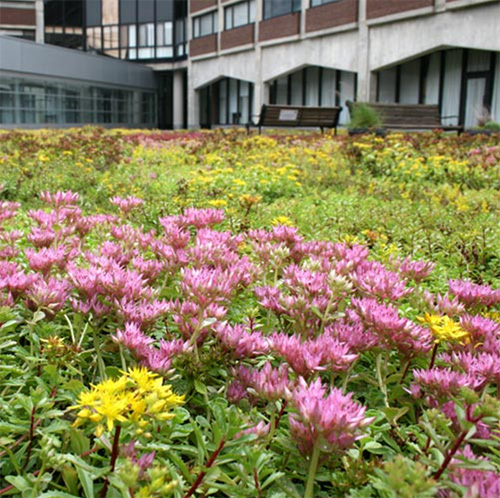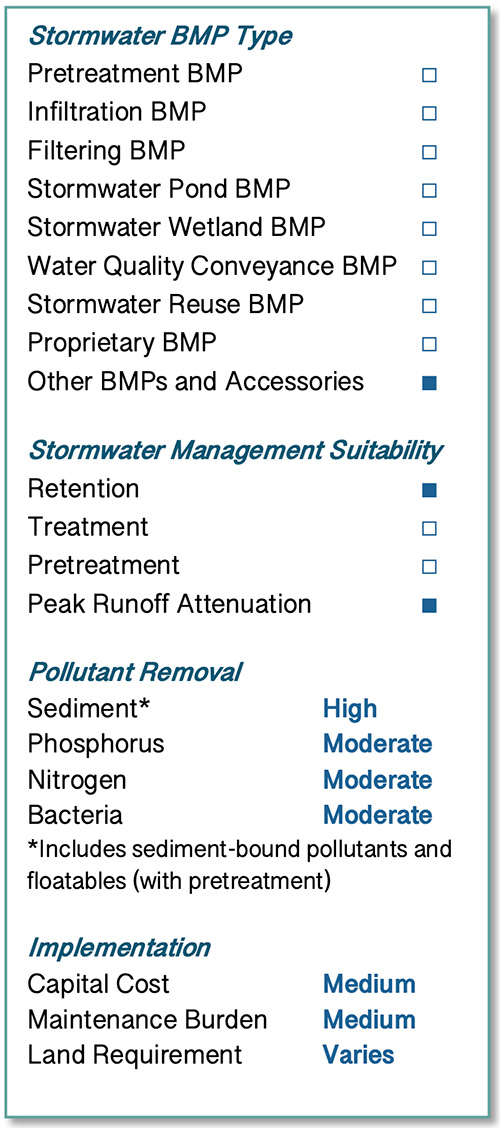Green roofs, also known as eco-roofs or vegetated roofs, consist of layers of soil and vegetation installed on building rooftops. Green roofs are typically multilayered systems that consist of a waterproof membrane, a synthetic drainage layer, a root barrier topped with a lightweight soil media, and a selection of plants suited to harsh rooftop conditions. Green roofs reduce runoff volumes and peak discharge rates by retaining runoff and creating longer flow paths. Rainwater is either intercepted by vegetation and evaporated to the atmosphere or retained in the substrate before being returned to the atmosphere through evapotranspiration.
The ability of a green roof to absorb and/or retain stormwater depends primarily on the type of plant material and soil medium but also depends on the drainage layer, the roof slope, the size of the roof and the season and climate. Green roofs may be used on newly constructed buildings or as retrofits of existing buildings. The structural integrity of the building is an important consideration for evaluating the feasibility of a green roof for a given application.
A green roof’s ability to influence the water quality of runoff depends on the chemical composition of the rain falling on it, the materials used to promote plant growth such as fertilizer, and the type of plants. While the soil media and vegetation of green roofs can reduce pollutants in stormwater, green roofs are generally not used for stormwater treatment because they capture rainwater, which is typically relatively clean. Green roofs primarily slow the flow of stormwater or intercept rainwater and supply it for non-potable uses like flushing toilets and irrigation. In addition to reducing the amount of stormwater runoff leaving a site, green roofs can mitigate heat island effects, reduce local air pollution, and lower building energy costs by providing additional insulation, among other benefits.

